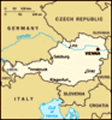Advertisement
Do you know how many notes are in a chromatic scale? In Western music, there are 12 familiar tones, each a half-step or a semitone apart. To visualize this, think of the keys on a piano: A half-step is the shortest distance between two keys, so if you start on C (which is a white key), one semitone up is C# (a black key), and one semitone up from that is D (another white key). The sequence in this case would continue as follows: D#, E, F, F#, G, G#, A, A#, and B. This type of scale, where you play every semitone in ascending or descending order from one octave to the next, is called a chromatic scale. Other, more common scales have fewer notes. For example, if you play a major scale — the familiar do-re-mi one — you'll run through only seven of the 12 tones before repeating the sequence. Major scales include both whole steps and half-steps in a specific order, starting from a "tonic" note: whole step, whole step, half step, whole step, whole step, whole step, half step. Again, it helps to visualize a piano. If you start on C and play up, hitting only
the white keys (D, E, F, G, A, and B), you'll be playing a C major scale. (Courtesy of LiveAbout) I once took piano lessons in my youth, but the piano teacher was older than her piano! My brother and I quit when my Mom would not let us switch to a younger teacher.A piano has 88 keys, 52 white, and 36 black keys. The inventor was Bartolomeo Cristofori, who started as a harpsicord designer and maker in the late 1600s.According to those who know, Beethoven's Moonlight Sonata is the best piece ever written for piano. Best pianist of all time? Chopin, Horowitz, Brendel, Liszt, Mozart, Rachmaninov, or Schumann. I vote for Artur Rubenstein, who I had the privilege of hearing in the 60s.Which European capital is also called, "The City of Music"?From Travel Trivia: Also called the music capital of the world, Vienna has been home to some of history’s top classical composers, including Beethoven, Brahms and Mozart. And it is no great wonder that the picturesque “City of Music” inspires equally stunning music and dance. The waltz was invented here, and starting during Carnival and lasting
well into March, Austria’s capital city continues to have a ball season with dances in the city center. Can’t dance? Duck into the Volksoper theater and be a spectator, where operettas and ballets often draw international audiences. I would love to waltz here again someday soon!Carnegie Hall is New York might be the most famous music venue in the world. And its prestige is based not only on classical music, but popular music as well. As you might guess, industrialist and philanthropist Andrew Carnegie paid for the famous hall. Here is an old Carnegie joke: Rumor is that a pedestrian on Fifty-seventh Street, Manhattan, stopped Jascha Heifetz and inquired, “Could you tell me how to get to Carnegie Hall?” “Yes,” said Heifetz. “Practice!” — This old joke has become part of the folklore of the hall, but its origins remain a mystery.Who, among many greats have performed here? How about Tchaikovsky, Charlie Chaplin, Judy Garland, Duke Ellington, Bob Dylan, Paul Simon, Elton John, Beatles, Ray Charles, Tony Bennett, B.B. King, Sinatra, Liza Minelli, Celine, Artur Rubenstein, Chuck Berry, Bruce Springsteen, Beach Boys, Moody Blues, Byrds, Doobies, and the
Rolling Stones.What is the best concert you have ever attended? Mine would be a tie between the farewell tours of Aretha Franklin, and Paul Simon. But had I been a little older and wise, I would have certainly said the great Artur Rubenstein.And is Carnegie the best place for a concert? I have also been to Royal Albert Hall, the Concertgebouw, the Mariinsky Theater in St. Petersburg, and the Sydney Opera House. Which is your favorite?Outdoor venues are enjoyable too. Events like The Capitol Fourth, the Boston Pops Fireworks Spectacular, Red Rocks, while not perfect for acoustics, creates a casual atmosphere for enjoying music.And from JoniMitchell.com: New York may have a lot of yellow taxis (and pavement), but it's not what Joni Mitchell was referencing when she sang that "they paved paradise and put up a parking lot." Nor is "paradise" a reference to the Paradise area of Mount Rainier in Washington, despite a popular myth. Mitchell's adopted home state of California isn't the right answer, either. According to her website, the "paradise" in question is beautiful, scenic Hawaii. Mitchell herself said as much when introducing the song in 1969, saying that she was moved to write the now-famous lyrics to "Big Yellow Taxi" on a trip to Hawaii, when she looked out her window and saw a parking lot in the middle of the otherwise beautiful landscape of "green, lush hills" and "Myna birds all over the place."Music fills a void in our lives, perhaps for a reason?
Advertisement
Tot: 0.098s; Tpl: 0.011s; cc: 17; qc: 27; dbt: 0.044s; 1; m:domysql w:travelblog (10.17.0.13); sld: 1;
; mem: 1.1mb







